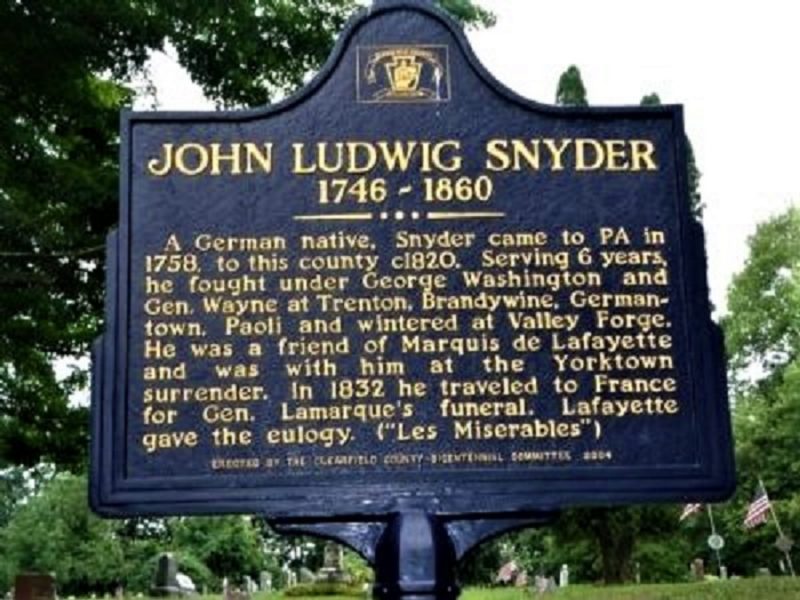John Ludwig Snyder was born near Manheim, Germany, in 1746, 275 years ago. He died in southwestern Clearfield County in 1860, and is buried in the small borough of New Washington.
Do not be confounded by the math. He was nearly 114 years old at the time of his death. His wife, Anna Gilman, lived to be 108. They once were likely the oldest, living married couple on the planet.
Snyder arrived in what was His Majesty’s Royal Colony of Pennsylvania in 1768, settling in the southeastern part of the state.
He joined General Washington’s hurriedly-organized army in 1775 upon the outbreak of the American Revolution.
If anyone soldiered on for eight long years of combat and miserable depravation, it was John Ludwig Snyder.
He froze with Washington’s depleted army, and crossed the Delaware River to achieve a surprise attack and rout the Hessian mercenaries, at Trenton, on Christmas night of 1776.
He bravely fought at the battles of Germantown, Brandywine and Paoli as the Americans retreated and ceded the capital city Philadelphia to the British in 1777.
Snyder spent the winter of 1777-78 freezing and starving at Valley Forge where he recalled shooting squirrels for food and to use the skins to cover his feet, as his boots had all but worn out.
Snyder went on to see combat at the American victory at Monmouth, N.J., and followed General Washington to the war’s ultimate victory in Yorktown, Va., in 1781.
Some modern contemporaries have compared Snyder to the Tom Hanks film character as the Forrest Gump of the American Revolution. He showed at plenty of the high points during the eight-year war.
Snyder and his family immigrated to Clearfield County in 1820. It is probable that he received land in the upstate wilderness as payment for his war service, as the commonwealth had little cash to pay its military veterans and instead rewarded them with land grants.
His local Raftsman’s Journal newspaper stated that Snyder was a gunsmith by trade, and raised a large family that numbered over 300 descendants at the time of his death.
Snyder outpaced the aging process as the same obituary incredibly boasted that he walked from New Washington to Clearfield and back, a combined distance of nearly 60 miles, all in one day!
In 1832, Snyder somehow made it to Baltimore to board a ship to France to attend the funeral of his friend, General Jean Maximilian Lemarque.
Snyder would have known and interacted with French officers when they were sent by King Louis XVI, after the Franco-American alliance, to Virginia to aid the American war effort.
General Lemarque’s funeral scene is played out in the musical film, Les Miserables. Snyder, himself, is mentioned by the world-renowned French author, Victor Hugo in his literary work of the same name.
Page 659 of the Fall River Press 2012 edition of the book says, “In the crowd …. it was noticed that a German showed himself named Ludwig Snyder, who died a centenarian afterwards, who had also been in the war of 1776, and who had fought at Trenton under Washington and at Brandywine under Lafayette.”
John Ludwig Snyder died at Bells Landing on March 23, 1860. The nation for which he sacrificed and fought so hard to help create, was then on the verge of crumbling into secession, treasonous rebellion and civil war. He was, as his obituary noted, “A hero manifestly in all senses.”
The photos show Snyder’s historical marker at the New Washington Cemetery and his newer tombstone. The original stone is kept at the Clearfield County Historical Society’s Kerr House Museum.
